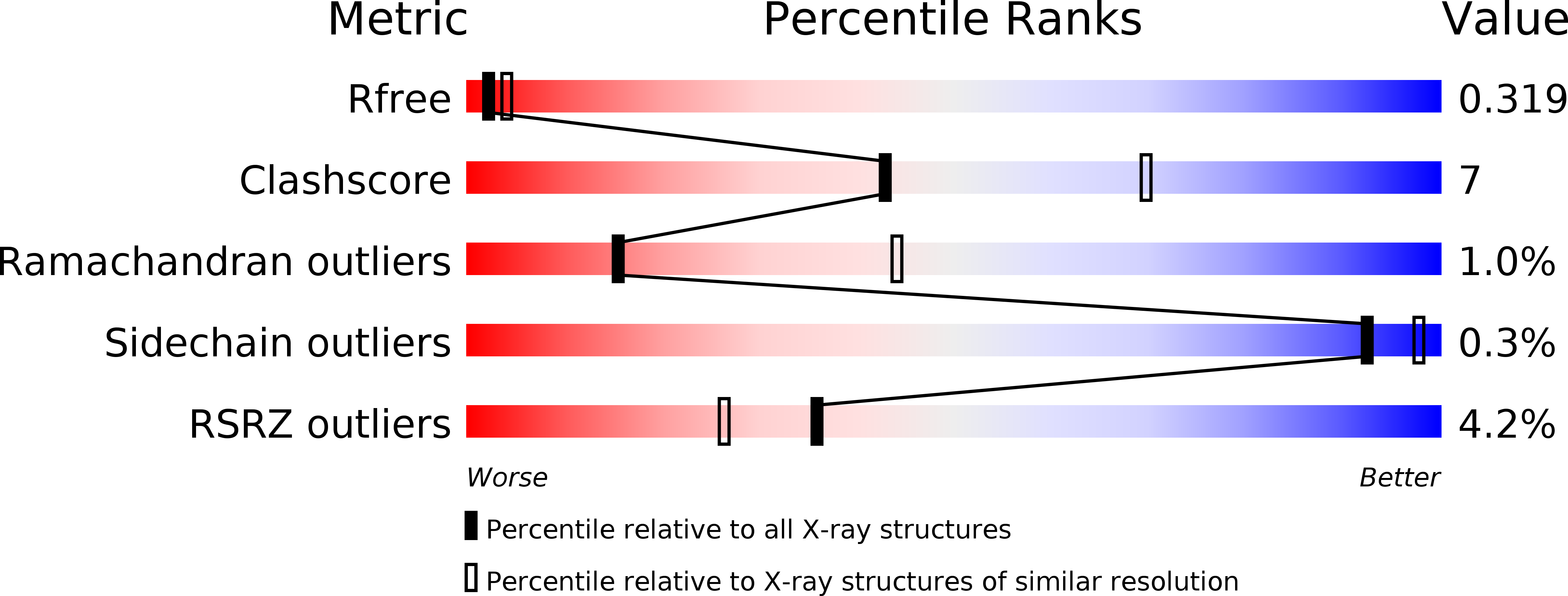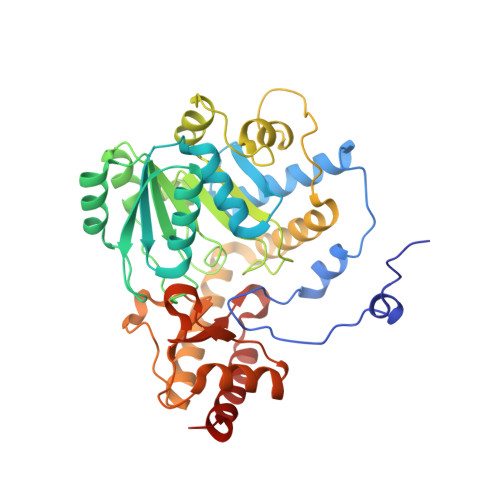Radiation damage at the active site of human alanine:glyoxylate aminotransferase reveals that the cofactor position is finely tuned during catalysis.
Giardina, G., Paiardini, A., Montioli, R., Cellini, B., Voltattorni, C.B., Cutruzzola, F.(2017) Sci Rep 7: 11704-11704
- PubMed: 28916765
- DOI: https://doi.org/10.1038/s41598-017-11948-w
- Primary Citation of Related Structures:
5F9S, 5HHY, 5LUC, 5OFY, 5OG0 - PubMed Abstract:
The alanine:glyoxylate aminotransferase (AGT), a hepatocyte-specific pyridoxal-5'-phosphate (PLP) dependent enzyme, transaminates L-alanine and glyoxylate to glycine and pyruvate, thus detoxifying glyoxylate and preventing pathological oxalate precipitation in tissues. In the widely accepted catalytic mechanism of the aminotransferase family, the lysine binding to PLP acts as a catalyst in the stepwise 1,3-proton transfer, interconverting the external aldimine to ketimine. This step requires protonation by a conserved aspartate of the pyridine nitrogen of PLP to enhance its ability to stabilize the carbanionic intermediate. The aspartate residue is also responsible for a significant geometrical distortion of the internal aldimine, crucial for catalysis. We present the structure of human AGT in which complete X-ray photoreduction of the Schiff base has occurred. This result, together with two crystal structures of the conserved aspartate pathogenic variant (D183N) and the molecular modeling of the transaldimination step, led us to propose that an interplay of opposite forces, which we named spring mechanism, finely tunes PLP geometry during catalysis and is essential to move the external aldimine in the correct position in order for the 1,3-proton transfer to occur.
Organizational Affiliation:
Department of Biochemical Sciences "A. Rossi Fanelli", Sapienza University of Rome, Rome, Italy. giorgio.giardina@uniroma1.it.
















